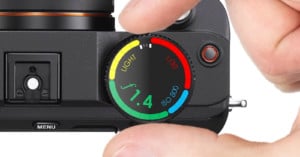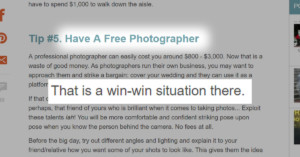
‘One Shot’ Contest Winners Exemplify Emotion of Black and White Photos
The Exposure One Awards have announced the winners of the 2024 One Shot Photo Contest, and they are an incredible showcase of the emotional power of black and white photography.

The Exposure One Awards have announced the winners of the 2024 One Shot Photo Contest, and they are an incredible showcase of the emotional power of black and white photography.

The "Exposure Donut" is a new way to understand manual exposure controls on a mirrorless camera. Created by British engineer and photographer Tim Helweg-Larsen, the Exposure Donut, or Expodo, is a software tool designed to simplify exposure on mirrorless cameras.

When compared to the other components of the exposure triangle (shutter speed and aperture), ISO appears to be the most intuitive on the surface. It is also the most misunderstood component, and everything from its definition to its usage has been discussed extensively.

As perhaps the most important parameter to understand in photography, shutter speed should be one of your first considerations when making a photograph. It’s one of the biggest reasons that photographers might find themselves unhappy with their shots, and having a great understanding of it is crucial to making great images.

Aperture can seem like one of the most challenging camera settings to fully understand, but once you understand it, your photography will improve immensely.

If you didn’t believe your grade school math teachers when they said you’d use graphs in the real world, you’re about to. In photography, histograms can seem intimidating, but they are incredibly useful tools that are much easier to understand than they appear. Learning about histograms will help you understand exposure, post-processing, and the overall structure of a photograph.

When you hear “long exposure,” you probably think of a shutter speed that’s too slow to hand-hold and produce a sharp image. It might be something like ¼”, or maybe as long as 30”, which is the most common slowest shutter speed in DSLR and mirrorless cameras. However, shutter speeds slower than 30” can be advantageous in many long-exposure scenarios.

You're out in the field, having scouted out a new location to grab a landscape vista. You release the shutter button and then chimp the back of the camera to see what you've captured... the sky's blocked out, blinking back at you. You've got a dreaded case of the blinkies, but does it actually matter?

In a world of increasing automation, at least photography still offers the opportunity to stay alert, active, and in command. While intimidating at first, shooting in full manual mode provides creative control, proper metering in tricky light, and deeper integration into the entire process of making photos. If you give it time, manual photography can help you craft your best images.

The Sunny 16 Rule is one of the simplest rules in photography that helps you gain correct exposure. It’s a formula that will tell you what shutter speed to use on a bright sunny day when the lens’s aperture is set to f/16.

An unofficial anthem for creative professionals has resurfaced as a playful and passive-aggressive way to explain why projects cost what they do and can't be paid for in exposure. (Warning: This song and article contain profanity).

So you’ve gotten pretty good at photography. Now what? If you’re like a lot of people, the idea of turning this creative outlet into a career might sound like an enticing next step. Many of us struggle with how to get started though.

The producers of the Netflix show Love is Blind -- Kinetic Content -- appear to be currently soliciting photographers to shoot five weddings over the course of five consecutive days that are scheduled for the next season of the show. Unfortunately, the role is unpaid.

Technology Connections, a YouTube channel that covers a wide array of interesting technology stories, has shared this 28-minute video that explores how the Canon F1 from 1971 works, with special detail focused on the camera's light meter.

Photographer Robert Hall recently released a simple-yet-brilliant explainer that uses water to illustrate the properties of light and explain a few concepts that frequently confuse beginners, including: what is a "stop" of light, how do you use the exposure triangle, and how do various flashes and flash modifiers affect your image.

Have you ever seen long exposure images shot using 10-stop ND filters? They are visually energetic and dynamic due to the motion blur caused by the moving clouds over a long duration of exposure.

A Chicago couple is being flamed online after their email to a wedding photographer went viral on Reddit. The email asks the photographer to shoot a 10-hour wedding in exchange for promotion to "300 total wedding guests," 117 of whom are unmarried and between the ages of 24 and 35.

When it comes to Lightroom alternatives, nobody has taken more users away from Adobe than Capture One Pro. But if you've never used Capture One and you need a crash course on the basics, Ted Forbes of The Art of Photography has put together a helpful video that you might find handy.

There is a lot to dive into when it comes to perfecting and understanding exposure. In this video and article (part one of a two-part series), we’ll be covering important in-camera functionalities such as using the Highlight Alert, your Histogram, how to set up Display Brightness, as well as the importance of shooting a flat Picture Style to get the right information.

Photography is an art and a commercial business. As a black-owned, woman-run business, Judah Avenue is both a passion project and an entrepreneurial breakthrough for me. I quit corporate America to pursue my art. As a girl who was born and raised in Ghana, that simply wasn’t something that was ever presented as a viable path for me.

Perhaps one of the more difficult aspects of landscape photography is determining how to properly expose your scene under less-than-ideal lighting conditions. These types of situations are a common occurrence with outdoor photography as it’s often a struggle trying to properly expose an image consisting of a bright sky and a dark foreground in a single image.

The Instagram "influencer" problem is only getting worse. Two days ago, we shared an email exchange between a pair of wedding photographers who ran afoul of an influencer who wanted a free wedding photography package. Now, a famous LA Ice Cream truck has gotten so fed up, the owner has officially started charging so-called influencers double when they ask for free stuff.

Photographer Jessica Kobeissi made this 5-minute video that has hit a nerve with many of her 1.3+ million followers on YouTube. She shares thoughts on why it's difficult for photographers to get paid fairly for work these days, arguing that by undercutting each other and working for little or no money, some photographers are lowering the bar for everyone else in the industry.

Photographers and other creatives often bemoan being asked to work for free in exchange for "exposure." But with the rise of Instagram and social media, many photographers and "influencers" are turning the tables and making the same types of requests... to the annoyance of businesses.

Have you been asked to shoot photos in exchange for "exposure" but aren't sure how many "exposures" your photography is worth? Figuring out a exposure exchange rate can be tricky, and that's where Photography Domination's handy Exposure Calculator comes in.

A long, long time ago, that is, in days of film photography, it was a rather difficult task to learn how to produce properly exposed pictures. There was no instant feedback and the only way to see how good of a job you did exposing the scene was to wait until the picture was developed.

On Tuesday, Apple launched a new Shot on iPhone Challenge that asks photographers to submit iPhone photos for a chance to be featured in a worldwide marketing campaign. The announcement sparked concern and controversy over whether Apple was asking for photos in exchange for purely "exposure." Apple clarified things today and yes, photographers will be paid.

The concept of equivalent exposure can be a tricky one to wrap your mind around when you're just getting started in photography. Photography enthusiast and animator Vincent Ledvina of Apalapse made this helpful 5.5-minute video that explains it in a simple and visual way.

An old wedding advice article has resurfaced, gone viral, and riled up a lot of photographers and non-photographers alike.

Using a graduated neutral density (GND) filter is fairly easy and doesn’t require any advanced techniques in post-production, but the easiest option isn’t always the best choice; due to the filter’s transition being horizontal, anything above the distinction will be darkened and anything below will be left alone.